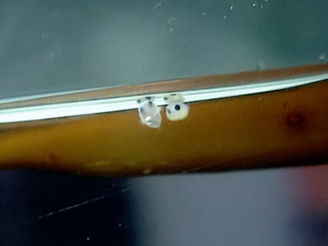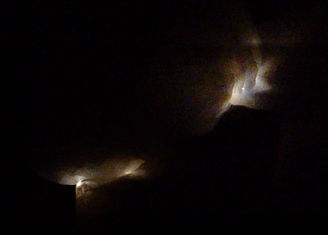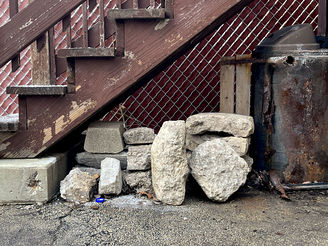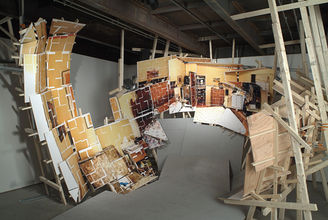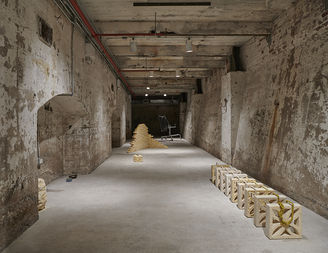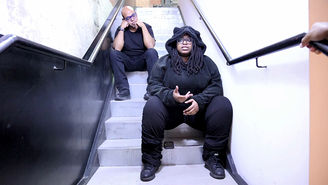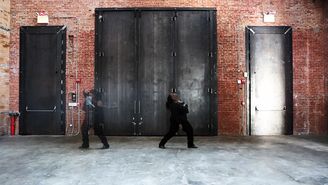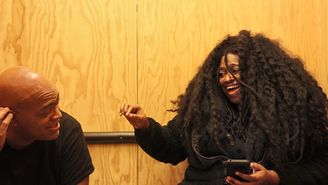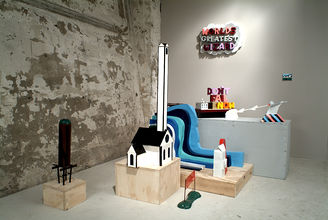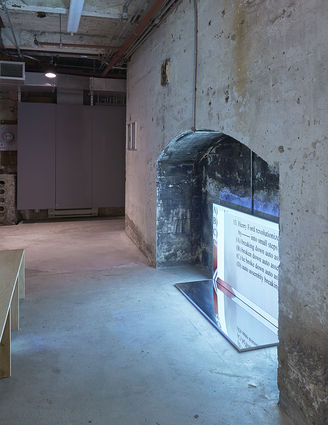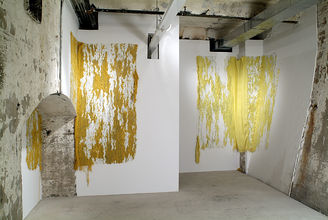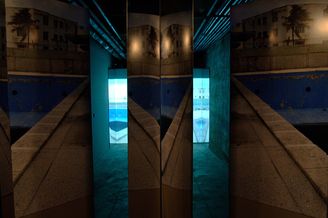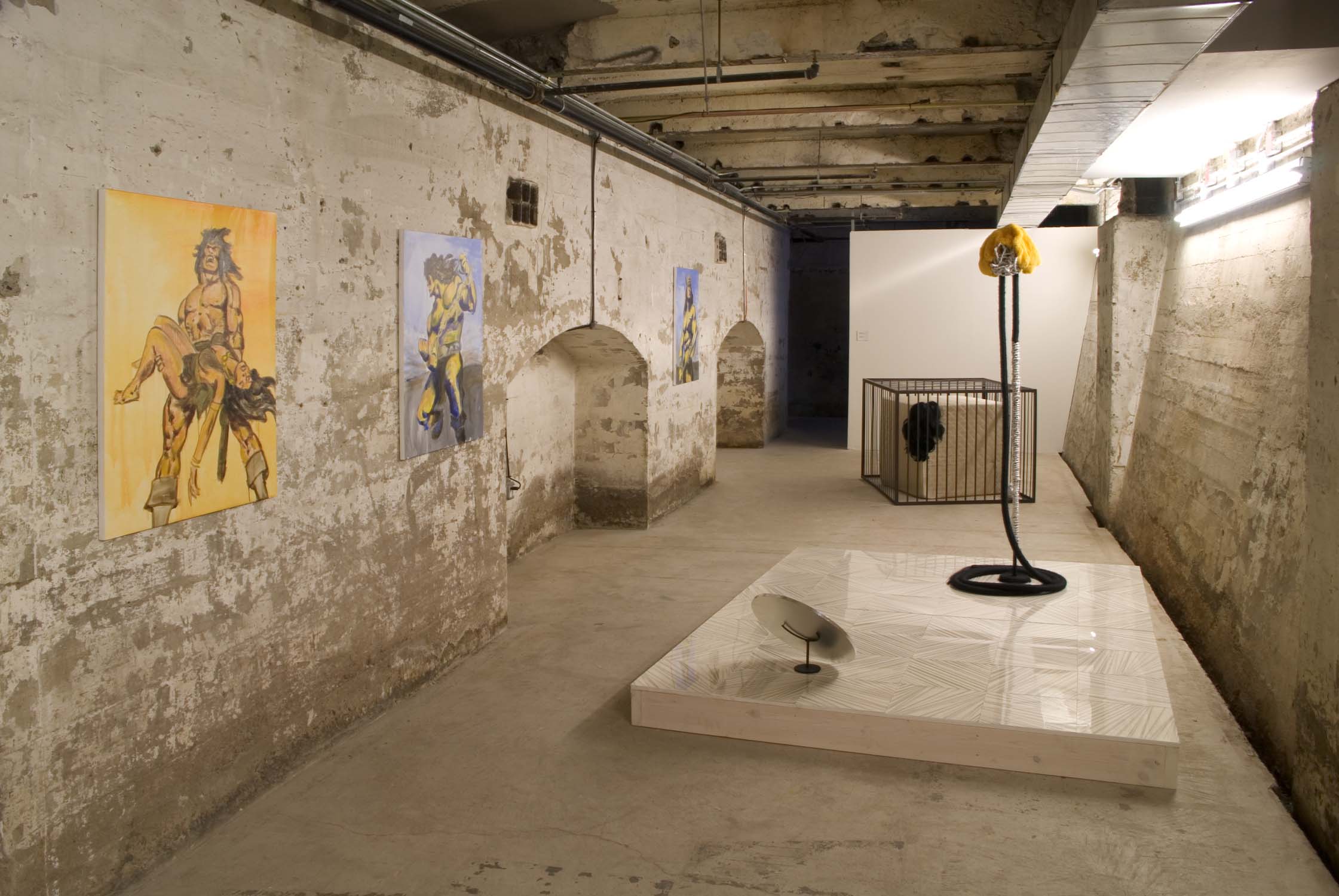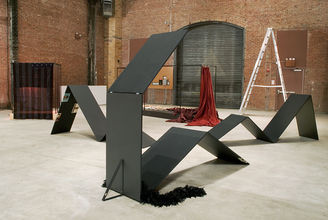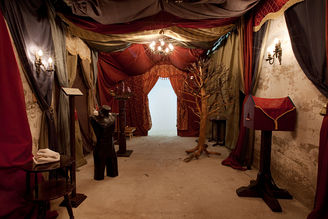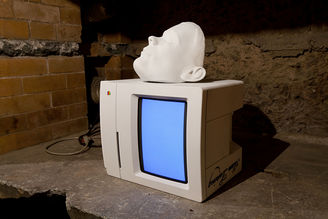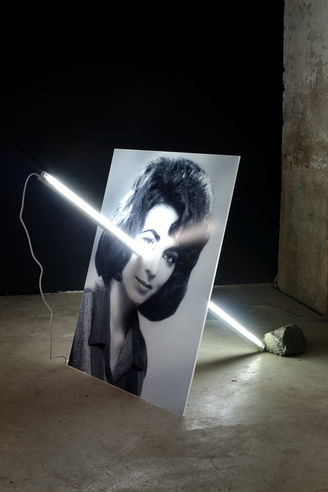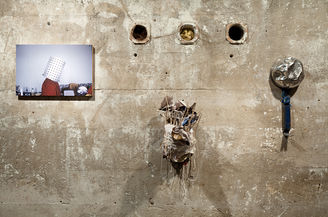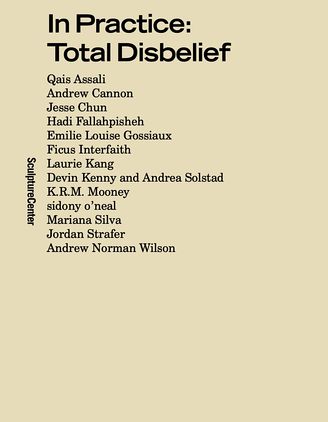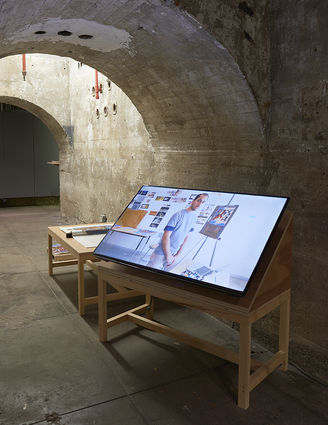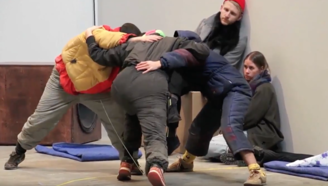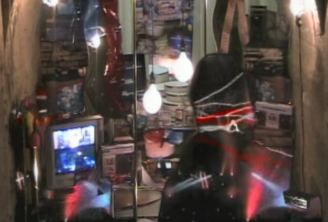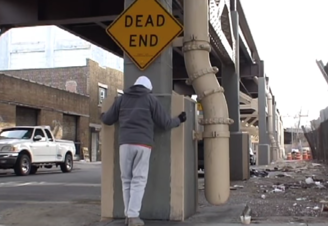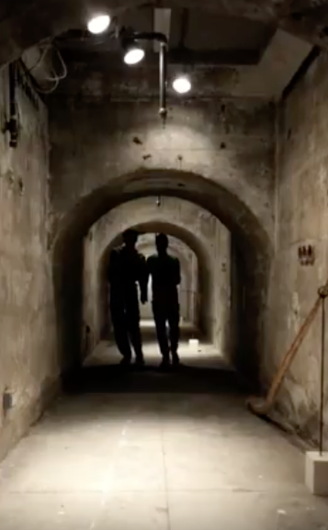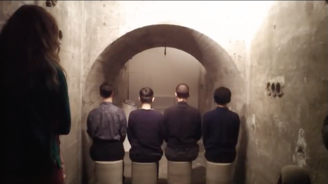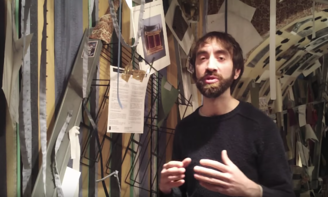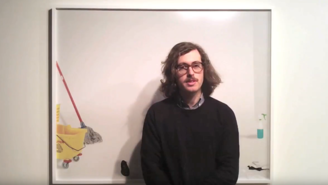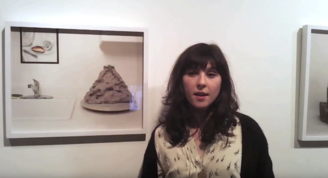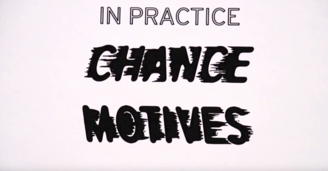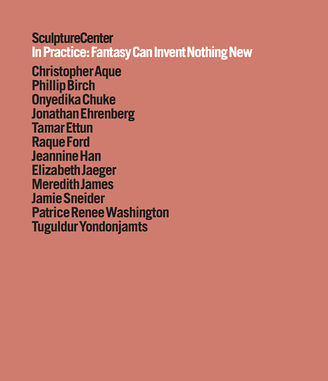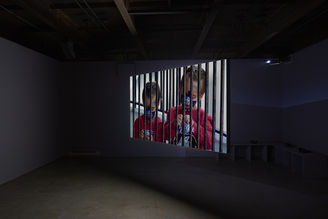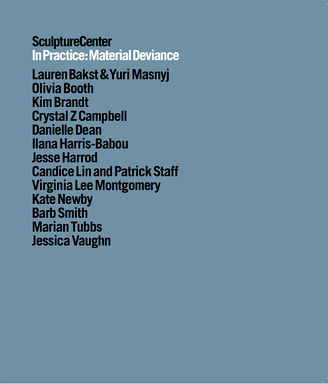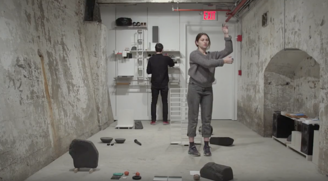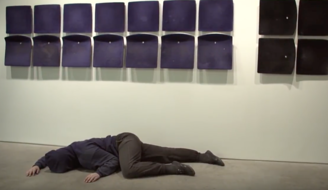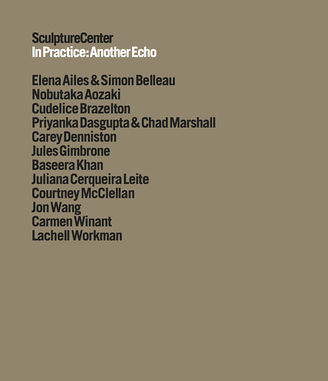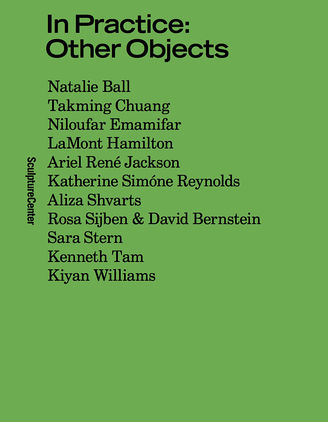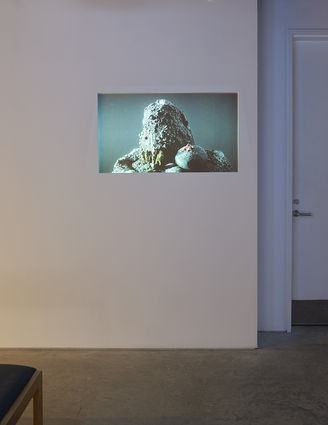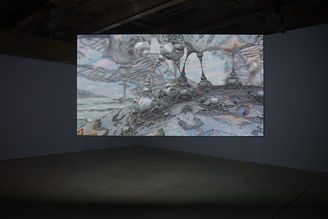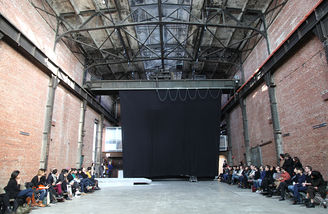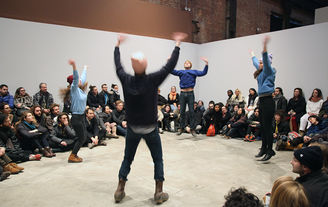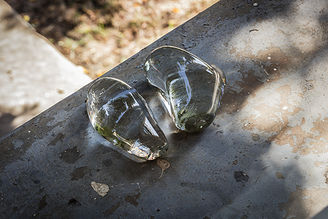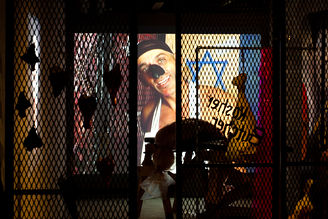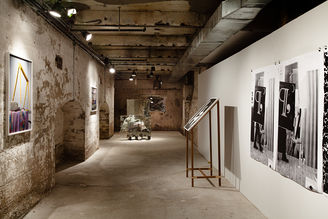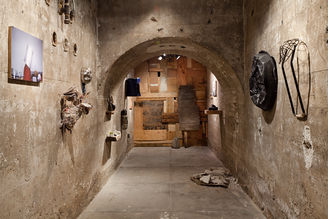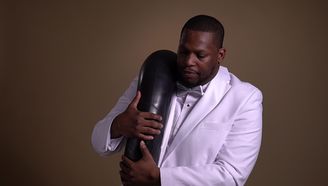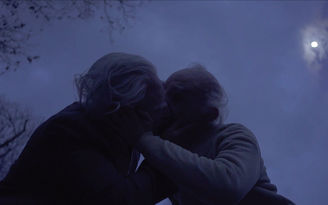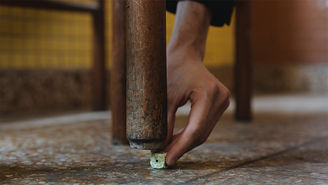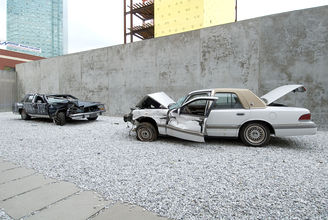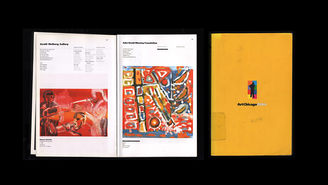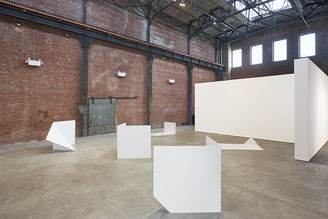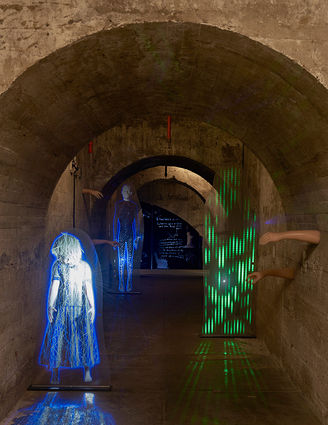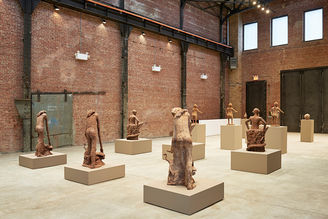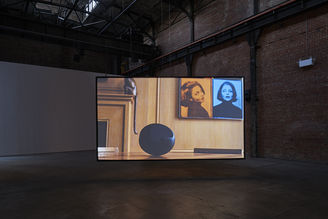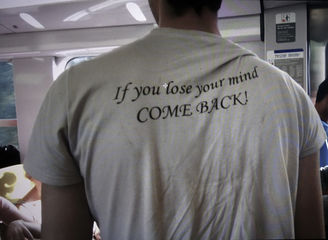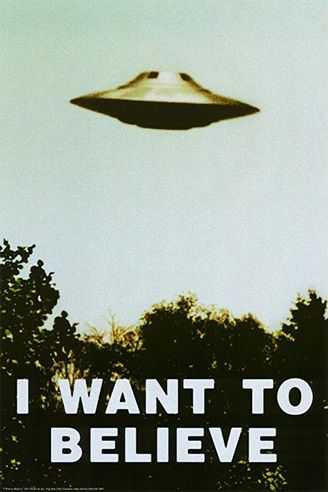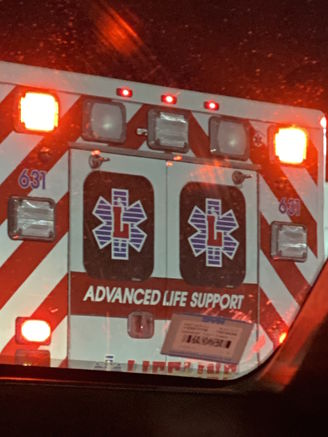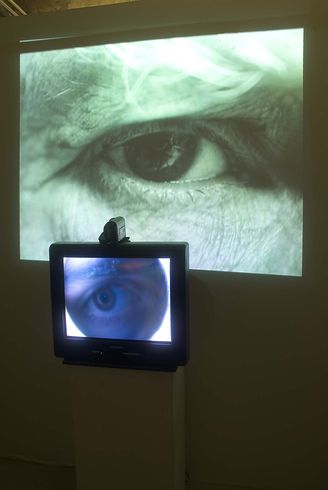In Practice: Claudia Pagès
In Practice: Claudia PagèsJan 25–Feb 19, 2024
- Images
- Text
- Press
- Sponsors
- Related
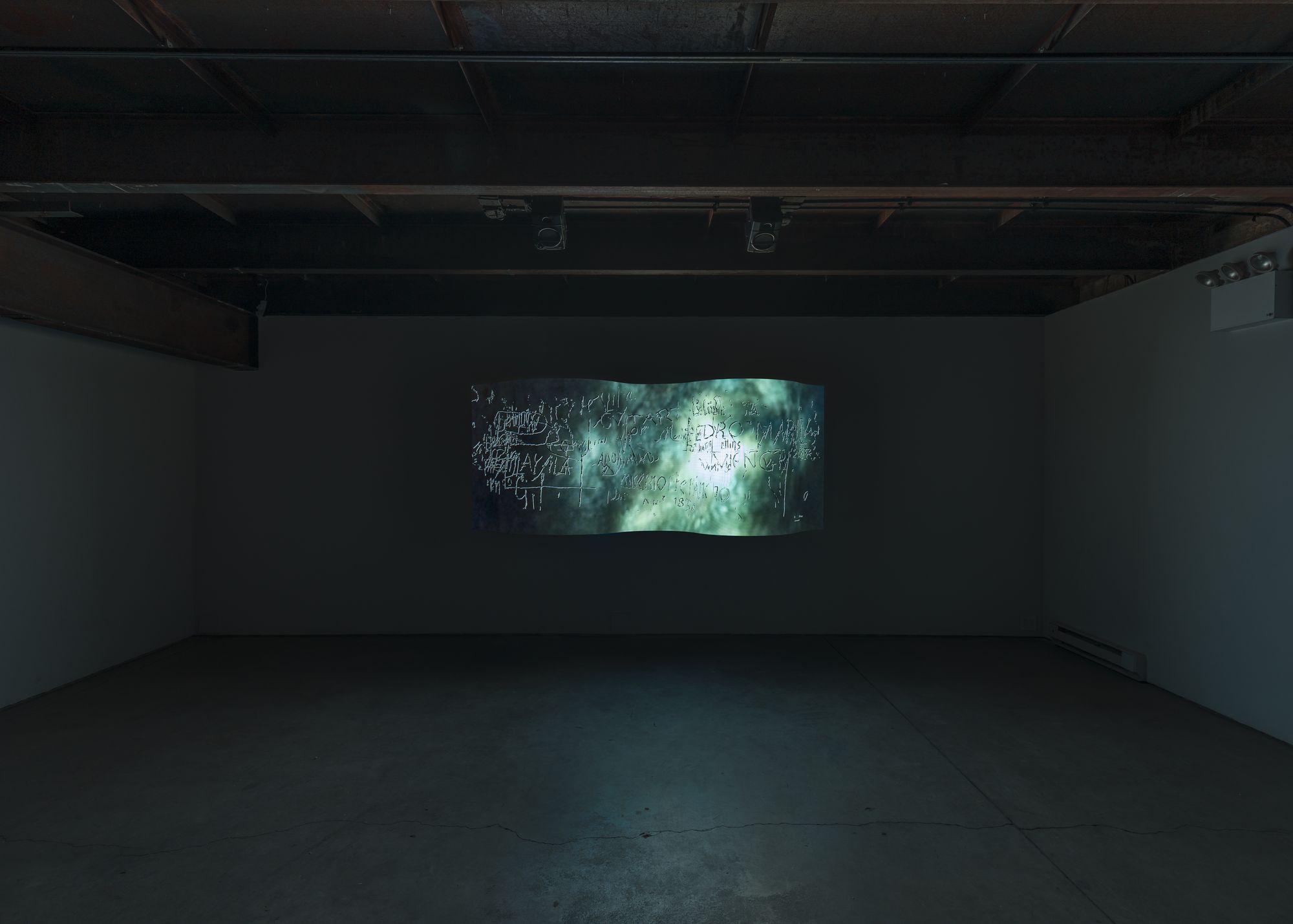
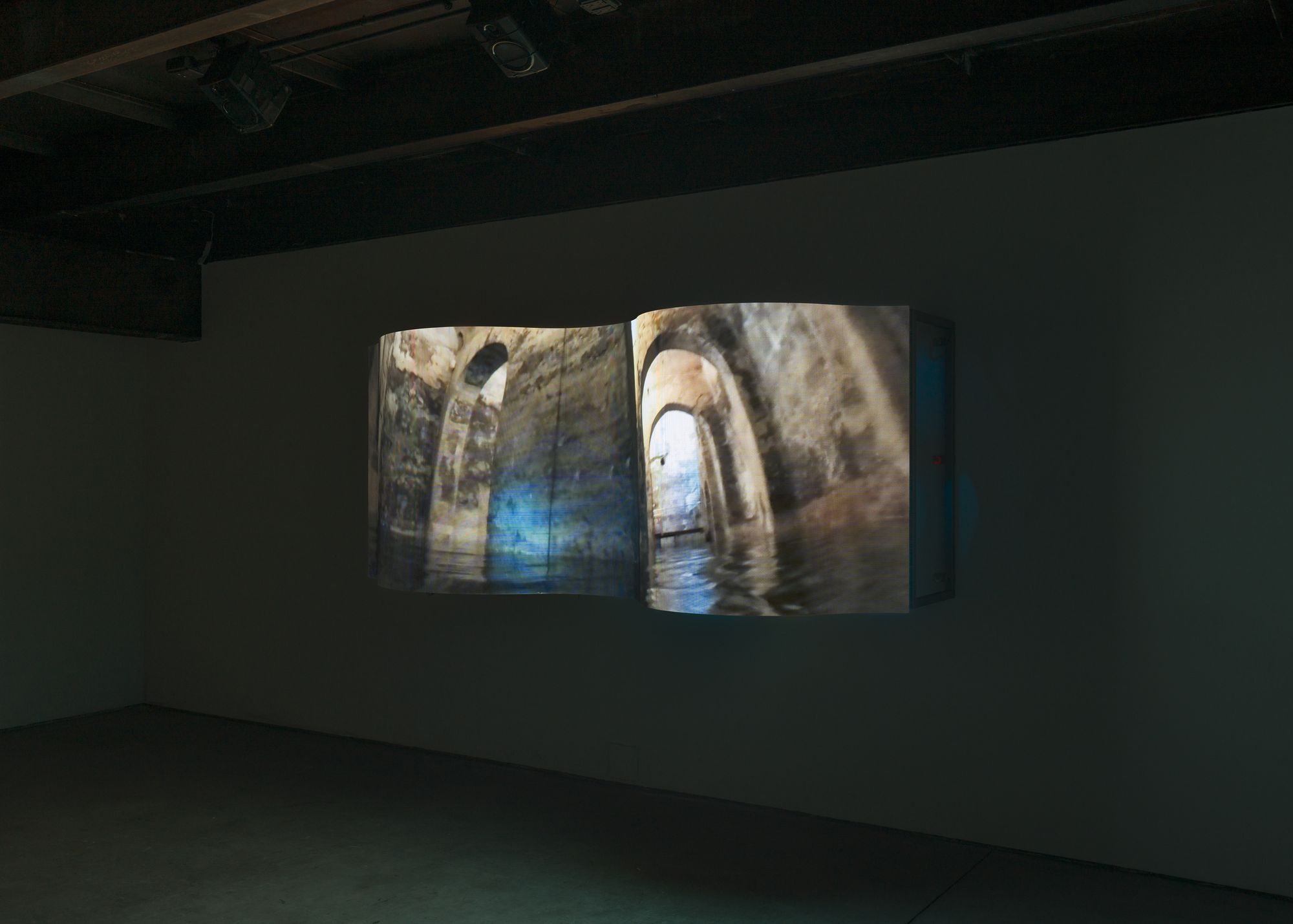
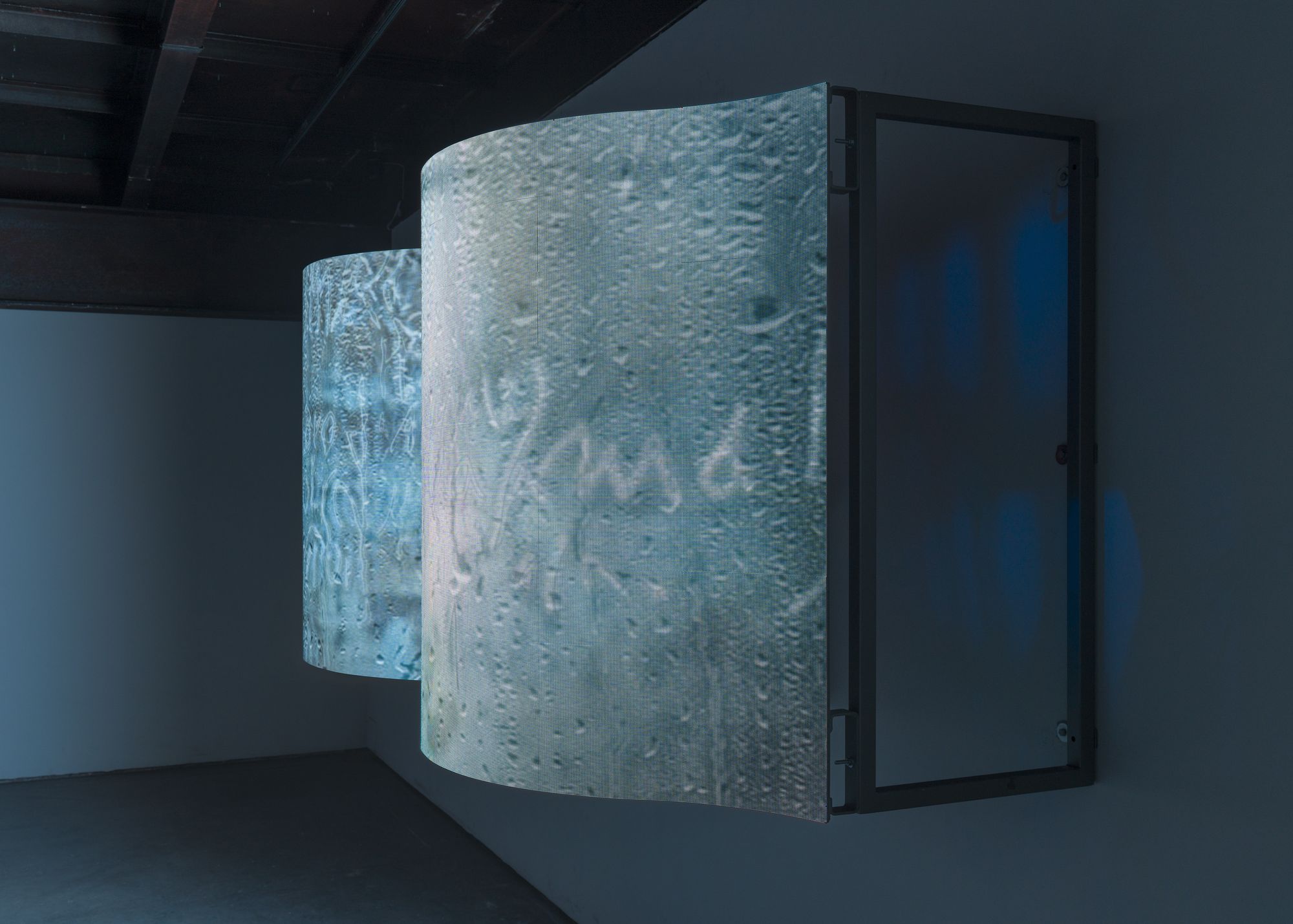
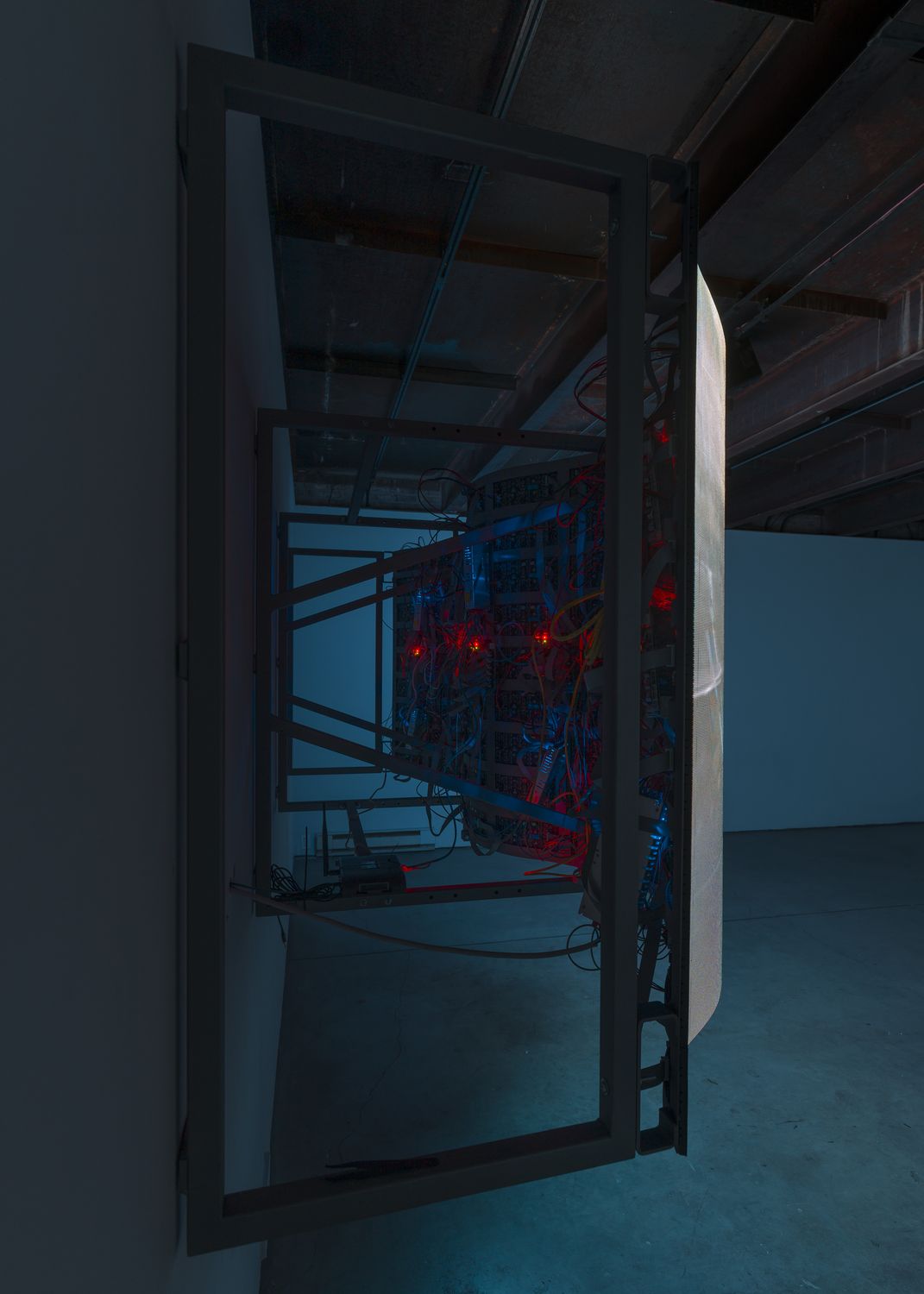
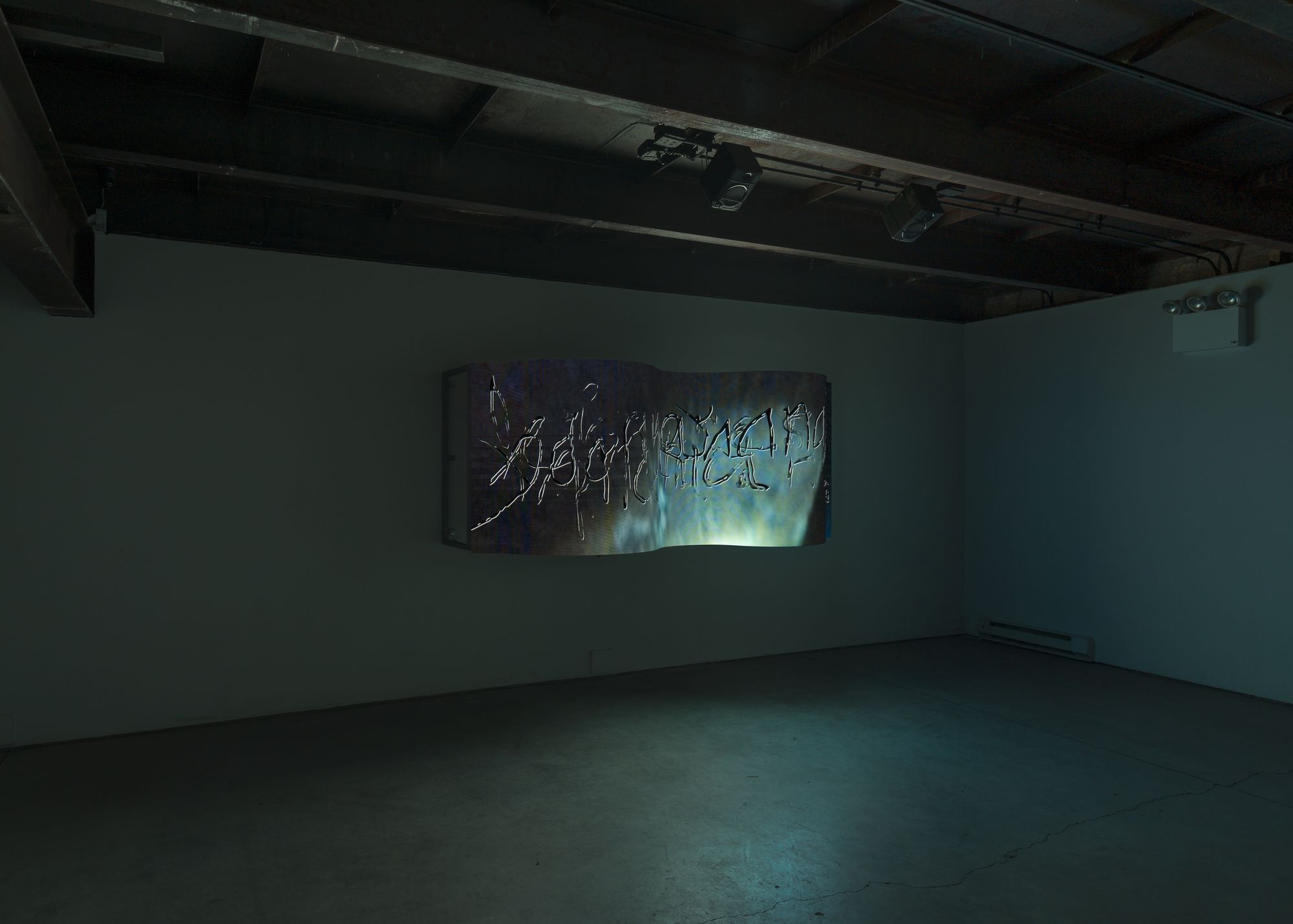
Claudia Pagès, Typo-Topo-Time Aljibe, 2024. LED screens, metal structure, video with sound (12’32”). 44 x 104 x 32 inches (106 x 264 x 81 cm). Commissioned by SculptureCenter, New York. Courtesy the artist. Photo: Charles Benton
Claudia Pagès’s work circulates word, body, music, and movement in multiple directions, tracing the continuity of logistics systems—like shipping and transport—alongside legal language and proceedings.
Pagès’s new video installation, Typo-Topo-Time Aljibe (2024), explores the overlapping histories of an 11th century aljibe—a Moorish construction that collects rainwater in an underground cistern—in Xàtiva, Spain. First built during the Roman Empire, the aljibe was reconstructed during the al-Andalus period of Islamic rule as an aljama (a Moorish meeting place), rebuilt again as a Christian convent, and was recently transformed into a boutique hotel—a cycle mimicking ethnic erasure and displacement on the Iberian Peninsula. Contemporaneously with the aljibe’s construction, it was also in Xàtiva that paper was first introduced to Europe through the Silk Road, some thousand years after its invention in China.
In the video, shot in the first-person with a 360º camera, three voices track the artist as she navigates the cavernous space, its walls etched with centuries of graffiti—phalluses, names, dates, and legal contracts scribed into the stone walls. One voice directs the artist where to go next, as if guiding a character of a video game, as the artist’s voice responds by reading the inscriptions aloud. A third voice makes connections between the material world and the larger structures of time, power, and systems. Their vocalizations, laid over a poppy beat, slip in and out of accented English, Spanish, Catalan, and Arabic; legibility, histories, and identities coming in and out of focus. The video is shown on a custom steel-framed LED screen, its undulating shape reminiscent of an open book or a wave, time looping back on itself.
Pagès refers to the subjects of her work as “containment architectures,” upholding power through the flow of goods and capital. Water itself is an important natural resource, but it is also essential in the production of paper. In this way, Pagès binds these histories together—the materiality of the written word, the power of language to define, arrange, and rearrange history.
Sponsors
In Practice 2023 is made possible by the generosity of the Elaine Graham Weitzen Foundation for Fine Arts. The Foundation’s support for SculptureCenter’s annual open call exhibition reflects Elaine Graham Weitzen’s (1920-2017) lifelong commitment to emerging artists and her exuberant support of new ideas in art. Weitzen served as a devoted Trustee of SculptureCenter from 1987 to 2017.
Major support for the In Practice program is provided by the Pollock-Krasner Foundation. The In Practice program is supported in part by an award from the National Endowment for the Arts.
Support for In Practice: Claudia Pagès is provided by Institut Ramon Lull.
In Practice: Claudia Pagès is supported by the Eva Hesse Initiative for New Sculpture.
Leadership support for SculptureCenter’s exhibitions and programs is provided by Carol Bove, Barbara and Andrew Gundlach, the Anna-Maria and Stephen Kellen Foundation, Jill and Peter Kraus, and Teiger Foundation. Major support is provided by the Marguerite Steed Hoffman Donor Advised Fund at The Dallas Foundation, Karyn Kohl, Miyoung Lee and Neil Simpkins, Eleanor Heyman Propp, and Jacques Louis Vidal. Support is also generously provided by the May and Samuel Rudin Foundation, Inc., with additional funding from Candy and Michael Barasch, Sanford Biggers, Libby and Adrian Ellis, Jane Hait and Justin Beal, and Amy and Sean Lyons.

